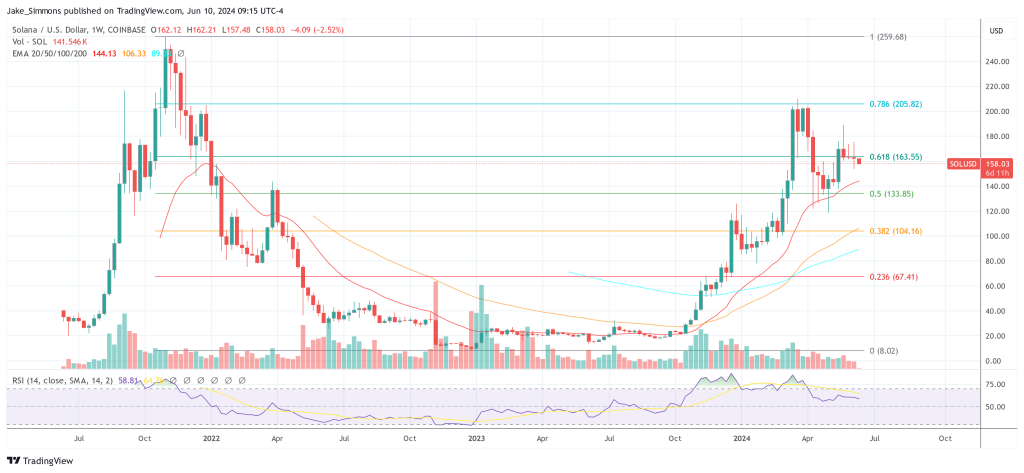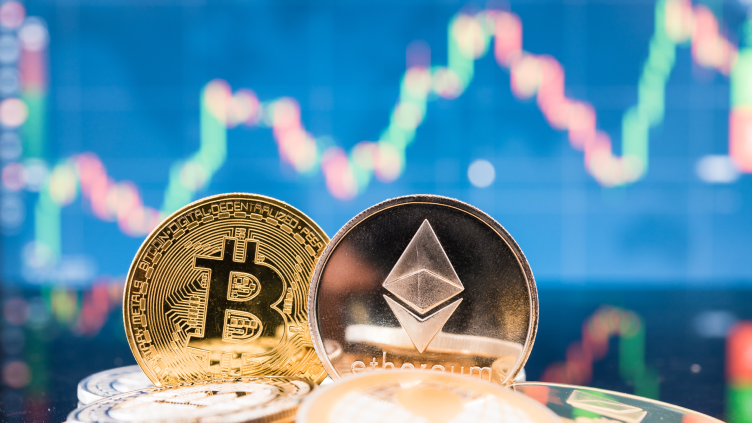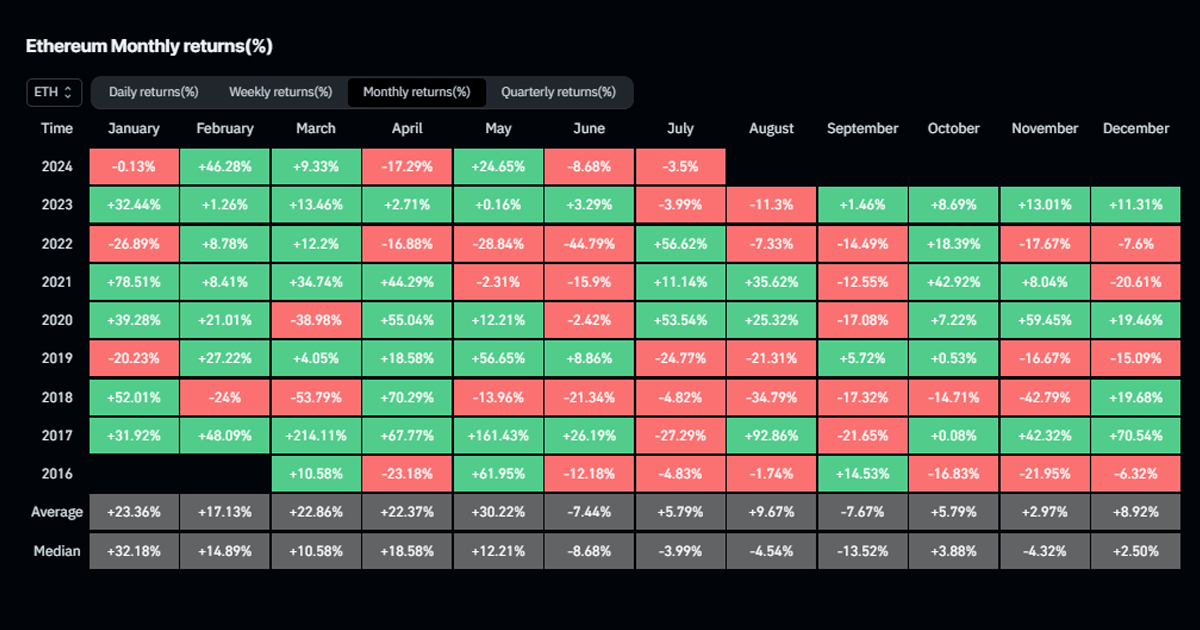Ethereum
Solana vs. Ethereum feud intensifies with Validator Ouster

The Solana Foundation has expelled a number of validator operators from its influential delegation program. This action is attributed to their involvement in carrying out “sandwich attacks” against unsuspecting network users, a form of predatory trading that undermines the integrity of the network. The decision adds a new layer to the growing rivalry between Solana and Ethereum, highlighting broader concerns around network governance and the ethical dimensions of validator operations.
Tim Garcia, Validator Relations Manager, made the announcement via Discord, emphasizing the finality of the Foundation’s decision: “A group of Solana Foundation Delegation Program operators have been removed from the program due to violations. […] Decisions in this matter are final. Enforcement actions are ongoing as we detect operators participating in mempools that enable sandwich attacks.
Mert Mumtaz, founder and CEO of Helius Labs, provided a detailed description explanation issues at stake. He described a sandwich attack as a manipulative trading strategy in which malicious actors exploit the order of transactions to disadvantage retail investors, ensuring that they receive the worst possible prices.
“This is not natively possible on Solana because the client does not have a memory pool,” explained Mumtaz. “Some actors have added mods to their validators to enable sandwiching on Solana.” He stressed that the main objective of the SOL Foundation is to protect individual users against these attacks, emphasizing that although the ousted operators can still operate on the network, they will no longer benefit from the Foundation’s subsidies.
Solana counters. Rivalry with Ethereum intensifies
The incident drew heavy criticism from stalwarts of the Ethereum community, including Ryan Berckmans, an esteemed investor known as ryanb.eth. He criticized SOL’s approach to solving MEV issues, questioning the seriousness of the network as a settlement layer.
“The Solana Foundation provides financial support to many validators because it costs over $65,000/year to operate a Sol validator. Now the next step in their plan to solve MEV was to obtain financial support from validators who extract the MEV. Solana is not a serious implementation layer”, Berckmans affirmed.
Contrary to Berckmans’ criticism, Mumtaz highlighted the financial and operational disparities between Solana and Ethereum validators. “You haven’t done the work to have an informed opinion,” Mumtaz retorted, pointing out that while Solana validators have lower setup costs than Ethereum’s 32 ETH. minimum bet requirement.
“Maybe you forget that with the minimum of 32 ETH, it costs around 120,000 Eth, which is twice as much as Solana – *and* while the SOL validator’s revenue has exceeded Eth several times over the last month. it doesn’t take away “support from validators who do mev,” he said and clarified that the SOL Foundation “simply does not distribute grants to malicious validators who sandwich, who steal retail and then keep all rewards with 0 network/in protocol distribution – this is purely extractive.
Continuing the dialogue, Lucas Bruder, CEO of Jito Labs, defended the position of the Foundation, with an emphasis on the alignment of interests between the Foundation and the wider network. “The Solana foundation is a shareholder in the network. Stakeholders should want to see the network succeed. Why would they support something that diminishes the network’s chances of success? » he applied.
However, Bruder also acknowledged the predominant nature of memecoin trading and the potential risks of alienating this user base. “Most activity on Solana is memecoin tradingso if you screw up the core user base of blockspace, they will leave and we will all be sitting here with less usage wondering why we didn’t do anything,” he argued, emphasizing the need to a long-term approach. solutions to network challenges.
Ryan Berckmans doubled down on his criticism, saying: “So if the Solana Foundation doesn’t use its centralized power to incentivize validators to stop mining as much MEV as possible, then memecoin traders might have had enough and move to a fast and cheap chain with less extraction potential. MEV mining, like Ethereum Base L2, then Solana would be a ghost chain. I think this story writes itself. The SOL/ETH ratio significantly overestimates Solana’s durability as a serious competitor to Eth L1 or our best L2s.
This ongoing debate highlights the heated rivalry between SOL and ETH as well as the complexity of governance in decentralized networks, technical challenges associated with MEV, and strategic decisions that can significantly impact the perception and functionality of blockchain ecosystems.
At press time, SOL was trading at $158.03.
 SOL Falls Below 1-Week 0.618 Fib Chart | Source: SOLUSD on TradingView.com
SOL Falls Below 1-Week 0.618 Fib Chart | Source: SOLUSD on TradingView.com
Featured image of CoinDCX, chart from TradingView.com
Ethereum
QCP sees Ethereum as a safe bet amid Bitcoin stagnation

QCP, a leading trading firm, has shared key observations on the cryptocurrency market. Bitcoin’s struggle to surpass the $70,000 mark has led QCP to predict Selling pressure is still strong, with BTC likely to remain in a tight trading range. In the meantime, Ethereum (ETH) is seen as a more promising investment, with potential gains as ETH could catch up to BTC, thanks to decreasing ETHE outflows.
Read on to find out how you can benefit from it.
Bitcoin’s Struggle: The $70,000 Barrier
For the sixth time in a row, BTC has failed to break above the $70,000 mark. Bitcoin is at $66,048 after a sharp decline. Many investors sold Bitcoin to capitalize on the rising values, which caused a dramatic drop. The market is becoming increasingly skeptical about Bitcoin’s rise, with some investors lowering their expectations.
Despite the continued sell-off from Mt. Gox and the US government, the ETF market remains bullish. There is a notable trend in favor of Ethereum (ETH) ETFs as major bulls have started investing in ETFs, indicating a bullish sentiment for ETH.
QCP Telegram Update UnderlinesIncreased market volatility. The NASDAQ has fallen 10% from its peak, led by a pullback in major technology stocks. Currency carry trades are being unwound and the VIX, a measure of market volatility, has jumped to 19.50.
The main factors driving this uncertainty are Value at Risk (VaR) shocks, high stock market valuations and global risk aversion sentiment. Commodities such as oil and copper have also declined on fears of an economic slowdown.
Additionally, QCP anticipates increased market volatility ahead of the upcoming FOMC meeting, highlighting the importance of the Federal Reserve’s statement and Jerome Powell’s subsequent press conference.
A glimmer of hope
QCP notes a positive development in the crypto space with an inflow of $33.7 million into ETH spot ETFs, which is giving a much-needed boost to ETH prices. However, they anticipate continued outflows of ETHE in the coming weeks. The recent Silk Road BTC moves by the US government have added to the market uncertainty.
QCP suggests a strategic trade involving BTC, which will likely remain in its current range, while ETH offers a more promising opportunity. They propose a trade targeting a $4,000-$4,500 range for ETH, which could generate a 5.5x return by August 30, 2024.
Ethereum
Ethereum Whale Resurfaces After 9 Years, Moves 1,111 ETH Worth $3.7 Million

An Ethereum ICO participant has emerged from nearly a decade of inactivity.
Lookonchain, a smart on-chain money tracking tool, revealed On X, this long-inactive participant recently transferred 1,111 ETH, worth approximately $3.7 million, to a new wallet. This significant move marks a notable on-chain movement, given the participant’s prolonged dormancy.
The Ethereum account in question, identified as 0xE727E67E…B02B5bFC6, received 2,000 ETH on the Genesis block over 9 years ago.

This initial allocation took place during the Ethereum ICOwhere the participant invested in ETH at around $0.31 per coin. The initial investment, worth around $620 at the time, has now grown to millions of dollars.
Recent Transactions and Movements
The inactive account became active again with several notable output transactions. Specifically, the account transferred 1,000 ETH, 100 ETH, 10 ETH, 1 ETH, and 1 more ETH to address 0x7C21775C…2E9dCaE28 within a few minutes. Additionally, it moved 1 ETH to 0x2aa31476…f5aaCE9B.
Additionally, in the latest round of transactions, the address transferred 737,995 ETH, 50 ETH, and 100 ETH, for a total of 887,995 ETH. These recent activities highlight a significant movement of funds, sparking interest and speculation in the crypto community.
Why are whales reactivating?
It is also evident that apart from 0xE727E67E…B02B5bFC6, other previously dormant Ethereum whales are waking up with significant transfers.
In May, another dormant Ethereum whale made headlines when it staked 4,032 ETHvalued at $7.4 million, after more than two years of inactivity. This whale initially acquired 60,000 ETH during the Genesis block of Ethereum’s mainnet in 2015.
At the time, this activity could have been related to Ethereum’s upgrade known as “Shanghai,” which improved the network’s scalability and performance. This whale likely intended to capitalize on the price surge that occurred after the upgrade.
Disclaimer: This content is informational and should not be considered financial advice. The opinions expressed in this article may include the personal opinions of the author and do not reflect the opinion of The Crypto Basic. Readers are encouraged to conduct thorough research before making any investment decisions. The Crypto Basic is not responsible for any financial losses.
-Advertisement-
Ethereum
Only Bitcoin and Ethereum are viable for ETFs in the near future

BlackRock: Only Bitcoin and Ethereum Are Viable for ETFs in the Near Future
Bitcoin and Ethereum will be the only cryptocurrencies traded via ETFs in the near future, according to Samara Cohen, chief investment officer of ETFs and indices at BlackRock, the world’s largest asset manager.
In an interview with Bloomberg TV, Cohen explained that while Bitcoin and Ethereum have met BlackRock’s rigorous criteria for exchange-traded funds (ETFs), no other digital asset currently comes close. “We’re really looking at the investability to see what meets the criteria, what meets the criteria that we want to achieve in an ETF,” Cohen said. “Both in terms of the investability and from what we’re hearing from our clients, Bitcoin and Ethereum definitely meet those criteria, but it’s going to be a while before we see anything else.”
Cohen noted that beyond the technical challenges of launching new ETFs, the demand for other crypto ETFs, particularly Solana, is not there yet. While Solana is being touted as the next potential ETF candidate, Cohen noted that the market appetite remains lacking.
BlackRock’s interest in Bitcoin and Ethereum ETFs comes after the successful launch of Ethereum ETFs last week, which saw weekly trading volume for the crypto fund soar to $14.8 billion, the highest level since May. The success has fueled speculation about the next possible ETF, with Solana frequently mentioned as a contender.
Solana, known as a faster and cheaper alternative to Ethereum, has been the subject of two separate ETF filings in the US by VanEck and 21Shares. However, the lack of CME Solana futures, unlike Bitcoin and Ethereum, is a significant hurdle for SEC approval of a Solana ETF.
Despite these challenges, some fund managers remain optimistic about Solana’s potential. Franklin Templeton recently described Solana as an “exciting and major development that we believe will drive the crypto space forward.” Solana currently accounts for about 3% of the overall cryptocurrency market value, with a market cap of $82 billion, according to data from CoinGecko.
Meanwhile, Bitcoin investors continue to show strong support, as evidenced by substantial inflows into BlackRock’s iShares Bitcoin Trust (NASDAQ: IBIT). On July 22, IBIT reported inflows of $526.7 million, the highest single-day total since March. This impressive haul stands in stark contrast to the collective inflow of just $6.9 million seen across the remaining 10 Bitcoin ETFs, according to data from Farside Investors. The surge in IBIT inflows coincides with Bitcoin’s significant $68,000 level, just 8% off its all-time high of $73,000.
Ethereum
Ethereum Posts First Consecutive Monthly Losses Since August 2023 on New ETFs

Available exclusively via
Bitcoin ETF vs Ethereum: A Detailed Comparison of IBIT and ETHA
Andjela Radmilac · 3 days ago
CryptoSlate’s latest market report takes an in-depth look at the technical and practical differences between IBIT and BlackRock’s ETHA to explain how these products work.
-

 Ethereum12 months ago
Ethereum12 months agoEthereum Posts First Consecutive Monthly Losses Since August 2023 on New ETFs
-

 Regulation12 months ago
Regulation12 months agoCryptocurrency Regulation in Slovenia 2024
-

 News12 months ago
News12 months agoNew bill pushes Department of Veterans Affairs to examine how blockchain can improve its work
-

 Regulation12 months ago
Regulation12 months agoThink You Own Your Crypto? New UK Law Would Ensure It – DL News
-

 Regulation12 months ago
Regulation12 months agoUpbit, Coinone, Bithumb Face New Fees Under South Korea’s Cryptocurrency Law
-

 Regulation12 months ago
Regulation12 months agoA Blank Slate for Cryptocurrencies: Kamala Harris’ Regulatory Opportunity
-

 Regulation12 months ago
Regulation12 months agoBahamas Passes Cryptocurrency Bill Designed to Prevent FTX, Terra Disasters
-

 Regulation12 months ago
Regulation12 months agoIndia to Follow G20 Policy for Cryptocurrency Regulation: MoS Finance
-

 News1 year ago
News1 year ago“Captain Tsubasa – RIVALS” launches on Oasys Blockchain
-

 Ethereum1 year ago
Ethereum1 year agoComment deux frères auraient dérobé 25 millions de dollars lors d’un braquage d’Ethereum de 12 secondes • The Register
-

 News12 months ago
News12 months agoEU supports 15 startups to fight online disinformation with blockchain
-

 News1 year ago
News1 year agoSolana ranks the fastest blockchain in the world, surpassing Ethereum, Polygon ⋆ ZyCrypto





